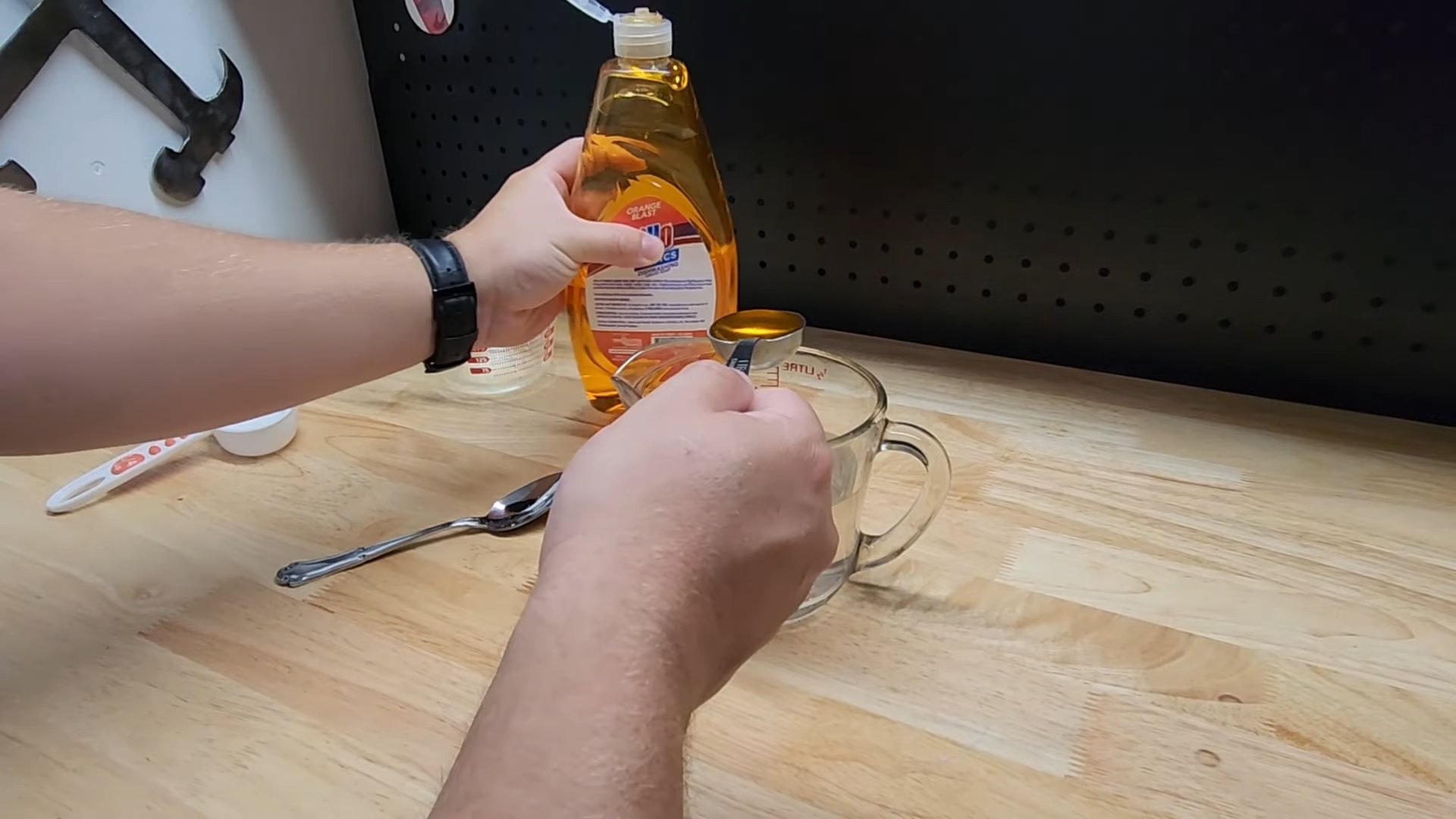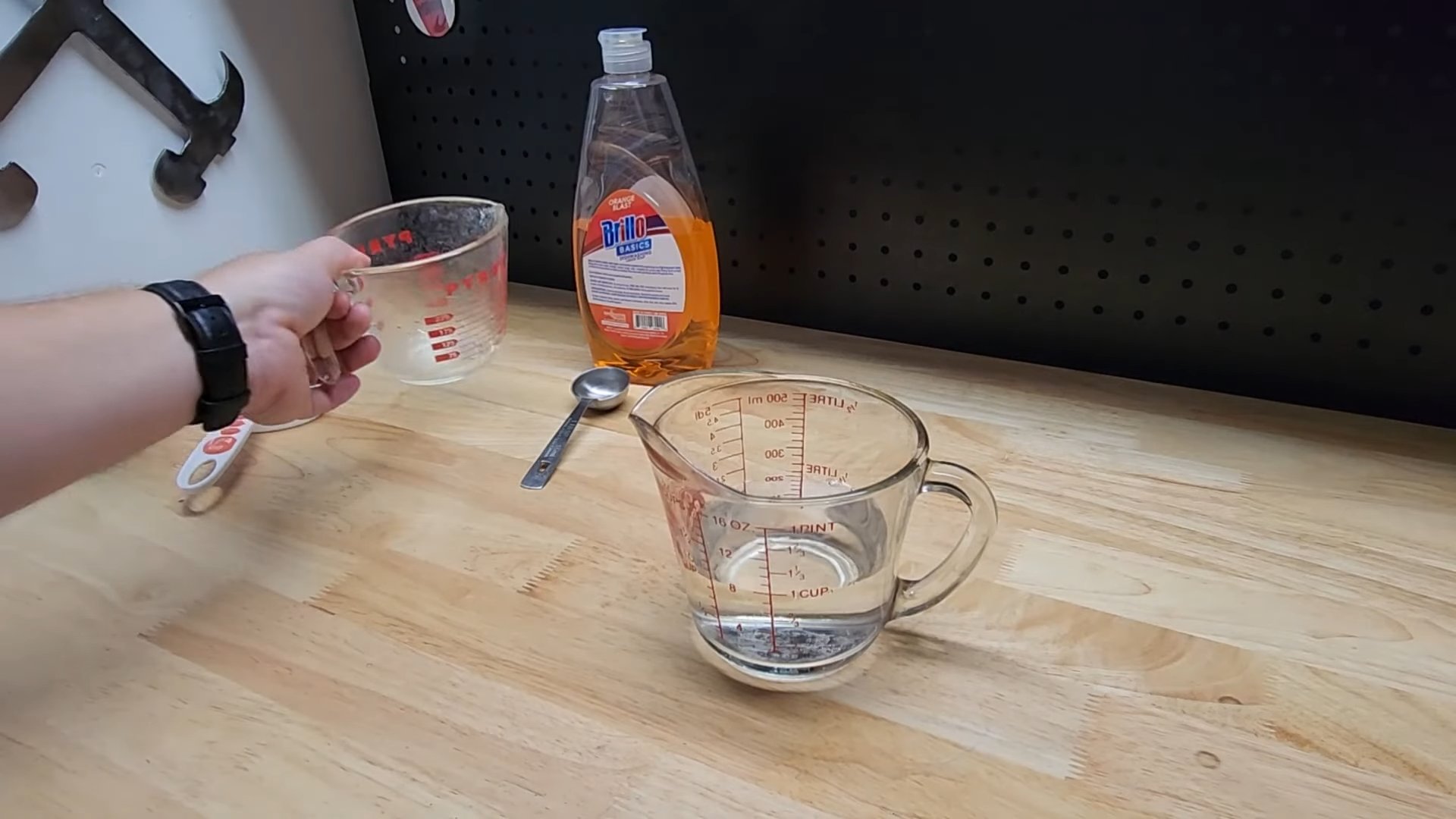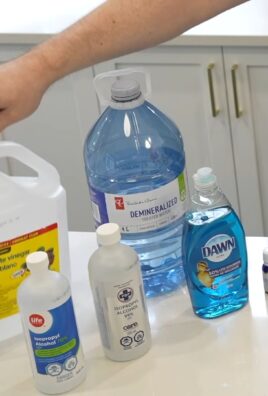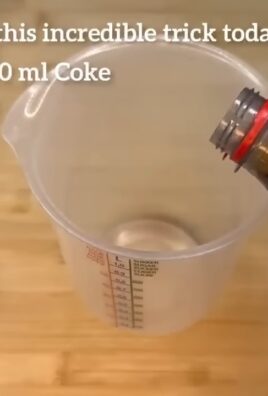DIY Fly Trap Formula: Tired of those pesky flies buzzing around your home and garden, turning your peaceful oasis into an irritating insect airport? I know I am! You’re not alone. For centuries, humans have battled these winged invaders, from swatting them with rudimentary tools to employing more sophisticated (and often chemical-laden) solutions. But what if I told you there’s a simple, effective, and eco-friendly way to reclaim your space?
This article is your ultimate guide to crafting a powerful DIY Fly Trap Formula using ingredients you likely already have in your kitchen. Forget expensive store-bought traps filled with questionable chemicals. We’re going back to basics, harnessing the power of simple science to lure and trap those annoying flies.
Why is this DIY trick so essential? Because flies aren’t just annoying; they can also spread bacteria and contaminate food. Whether you’re a seasoned gardener protecting your precious plants or simply seeking a fly-free home, this formula will become your new best friend. I’m going to show you how to create a safe, effective, and budget-friendly solution that will have you saying goodbye to flies in no time! Let’s get started!

DIY Fly Trap: Reclaim Your Space from Pesky Flies!
Okay, let’s face it, flies are annoying. They buzz around your head, land on your food, and generally make life unpleasant. Store-bought fly traps can be expensive and often contain harsh chemicals. But don’t worry! I’m going to show you how to make a super effective, non-toxic fly trap using simple ingredients you probably already have in your kitchen. This DIY project is easy, cheap, and incredibly satisfying when you see those little buggers finally meet their match!
What You’ll Need: The Fly-Catching Arsenal
Before we dive in, let’s gather our supplies. This is a pretty low-key project, so you won’t need anything fancy.
* A clear plastic bottle (like a soda or water bottle). A 2-liter bottle works great, but smaller ones will do too.
* Scissors or a craft knife (be careful!).
* Tape (duct tape or packing tape works best).
* A dark-colored liquid (red wine, grape juice, balsamic vinegar, or even soy sauce). This acts as an attractant.
* Dish soap (a few drops will do). This breaks the surface tension of the liquid.
* Water (to dilute the attractant).
* Optional: Sugar or honey (to sweeten the deal).
* Optional: Apple cider vinegar (another fly favorite).
Building Your Fly Trap: Step-by-Step Instructions
Alright, let’s get our hands dirty (well, not really dirty, but you know what I mean!). This is where the magic happens.
1. Prepare the Bottle: First, you need to cut the top off the plastic bottle. About one-third of the way down from the top is a good spot. Think of it like creating a funnel. Use your scissors or craft knife carefully to make the cut. I usually start with a small puncture and then carefully work my way around the bottle. Remember, safety first!
2. Invert the Top: Now, flip the top portion of the bottle upside down so it looks like a funnel and insert it into the bottom portion of the bottle. The neck of the bottle should be pointing down into the larger part of the bottle. This creates the trap – flies can easily fly in, but they’ll have a hard time finding their way out.
3. Secure the Top: Use your tape to secure the inverted top to the bottom of the bottle. Make sure there are no gaps or openings where flies could potentially escape. I like to use duct tape because it’s strong and durable, but packing tape works just fine too. Go around the bottle several times to ensure a tight seal.
4. Mix the Bait: Now for the crucial part – the bait! This is what will lure those pesky flies into your trap. In a separate container (or directly in the bottom of the bottle), mix your chosen attractant with water. I usually go for a ratio of about 1 part attractant to 2 parts water.
* Red Wine/Grape Juice: If you’re using red wine or grape juice, this is a simple and effective option. The sweetness and color are very appealing to flies.
* Balsamic Vinegar: Balsamic vinegar has a strong, pungent smell that flies can’t resist.
* Soy Sauce: Surprisingly, soy sauce works well too! The salty and savory aroma attracts flies.
* The Sweetener Boost: If you want to give your bait an extra boost, add a tablespoon or two of sugar or honey to the mixture. This will make it even more irresistible to flies.
* Apple Cider Vinegar Addition: Adding a splash of apple cider vinegar can also enhance the effectiveness of your trap.
5. Add the Dish Soap: This is a key step! Add a few drops of dish soap to your bait mixture. The dish soap breaks the surface tension of the liquid, so when the flies land on it, they’ll sink and drown instead of being able to walk on the surface.
6. Pour the Bait into the Trap: Carefully pour the bait mixture into the bottom of the bottle. You want the liquid level to be high enough to cover the bottom of the inverted funnel, but not so high that it overflows. About an inch or two of liquid is usually sufficient.
7. Placement is Key: Now, it’s time to strategically place your fly trap. Think about where you’ve seen the most flies in your home or garden. Common hotspots include:
* Near garbage cans
* In the kitchen, especially near fruit bowls or sinks
* On patios or decks
* Near pet food bowls
* Anywhere food scraps are likely to be present
Place your fly trap in a discreet location, away from direct sunlight (which can cause the liquid to evaporate too quickly).
Fine-Tuning Your Fly Trap: Tips and Tricks for Maximum Effectiveness
Okay, you’ve built your fly trap, but there are a few extra things you can do to make it even more effective.
* Experiment with Different Baits: Don’t be afraid to experiment with different attractants to see what works best in your area. Flies can be picky! Try different combinations of red wine, grape juice, balsamic vinegar, soy sauce, sugar, honey, and apple cider vinegar.
* Keep it Clean: Regularly check your fly trap and empty it when it gets full of flies or the liquid becomes too dirty. Rinse out the bottle and refill it with fresh bait.
* Multiple Traps: If you have a serious fly problem, consider making multiple traps and placing them in different locations. The more traps you have, the more flies you’ll catch.
* Outdoor Placement: If you’re using your fly trap outdoors, make sure to protect it from the rain. Rainwater can dilute the bait and make it less effective. You can place the trap under an overhang or inside a covered container.
* Patience is a Virtue: It may take a few days for your fly trap to start catching a significant number of flies. Be patient and give it time to work its magic.
* Vinegar Flies vs. House Flies: If you’re dealing with tiny fruit flies (also known as vinegar flies), apple cider vinegar is your best bet. They are particularly attracted to the sweet and fermented scent.
* Consider the Color: While a clear bottle works fine, some people believe that using a darker-colored bottle (or painting the outside of the bottle) can make the trap more attractive to flies. The dark color may mimic a rotting fruit or other food source.
* Safety First (Again!): Keep your fly traps out of reach of children and pets. While the ingredients are generally non-toxic, it’s always best to be cautious.
Troubleshooting: What to Do If Your Fly Trap Isn’t Working
Sometimes, even the best-laid plans can go awry. If your fly trap isn’t catching as many flies as you’d hoped, don’t despair! Here are a few things to check:
* Is the Bait Still Attractive? The bait may have evaporated or become diluted. Replace it with fresh bait.
* Is the Trap Clean? A dirty trap can actually repel flies. Clean it out and refill it with fresh bait.
* Is the Placement Correct? Make sure your trap is placed in a location where flies are likely to be present.
* Are You Using the Right Bait? Try experimenting with different attractants to see what works best.
* Are There Other Food Sources Available? If there are other readily available food sources, the flies may be ignoring your trap. Make sure to clean up any food scraps or spills.
* Check for Escape Routes: Double-check that the top of the bottle is securely taped to the bottom and that there are no gaps where flies could escape.
Beyond the Trap: Preventing Fly Infestations
While a fly trap is a great way to control fly populations, it’s even better to prevent infestations in the first place. Here are a few tips:
* Keep Your Home Clean: Regularly clean your kitchen, especially countertops, sinks, and floors. Wipe up any spills immediately.
* Store Food Properly: Store food in airtight containers to prevent flies from accessing it.
* Take Out the Trash Regularly: Don’t let garbage accumulate in your home. Take out the trash frequently and make sure your garbage cans have tight-fitting lids.
* Clean Up Pet Waste: Clean up pet waste promptly, as it can attract flies.
* Screen Your Windows and Doors: Make sure your windows and doors have screens to prevent flies from entering your home.
* Eliminate Standing Water: Flies breed in standing water. Eliminate any sources of standing water around your home, such as puddles, bird baths, and clogged gutters.
By following these tips, you can create a fly-free environment and enjoy your home without the annoyance of buzzing pests. And remember, your homemade fly trap is a powerful weapon in

Conclusion
So, there you have it! This simple, yet incredibly effective, DIY fly trap formula is more than just a quick fix; it’s a sustainable and budget-friendly solution to reclaim your home from those pesky flying invaders. Forget those expensive, chemical-laden store-bought traps that often smell worse than the problem they’re trying to solve. This method allows you to take control, using ingredients you likely already have in your pantry.
Why is this a must-try? Because it works! The combination of sweetness and fermentation creates an irresistible lure for flies, drawing them in and trapping them effectively. It’s a safer alternative for households with children and pets, minimizing the risk of accidental exposure to harmful chemicals. Plus, it’s incredibly satisfying to see those unwanted guests disappear without breaking the bank.
But the beauty of this DIY fly trap formula lies in its adaptability. Feel free to experiment with variations to find what works best for your specific situation. Try adding a few drops of essential oils like peppermint or eucalyptus to deter other insects while still attracting flies. You could also substitute the dish soap with a natural alternative like castile soap for an even more eco-friendly approach. Consider using different types of sweet liquids, such as fruit juice or even leftover soda, to see if you can enhance the trap’s effectiveness. Remember to adjust the water ratio based on the consistency of the sweet liquid you choose.
Don’t be afraid to get creative with your trap containers too. While a simple jar or plastic bottle works perfectly well, you can also repurpose decorative containers to make your fly traps blend seamlessly into your home decor. The key is to ensure the opening is wide enough for flies to enter easily but narrow enough to prevent them from escaping.
We are confident that this DIY fly trap formula will become your go-to solution for fly control. It’s easy to make, effective, and environmentally conscious. We encourage you to give it a try and experience the difference for yourself.
Once you’ve created your own DIY fly trap, we’d love to hear about your results! Share your experiences, variations, and any tips you’ve discovered in the comments below. Let’s build a community of fly-free homes and help each other conquer those annoying insects once and for all. Your feedback will not only help other readers but also inspire us to continue providing valuable and practical solutions for everyday problems. So, roll up your sleeves, gather your ingredients, and say goodbye to flies with this simple yet powerful DIY fly trap formula!
Frequently Asked Questions (FAQ)
What exactly makes this DIY fly trap formula so effective?
The effectiveness of this DIY fly trap formula lies in its carefully chosen ingredients. The sweet liquid, such as apple cider vinegar, sugar water, or fruit juice, acts as a powerful attractant, drawing flies in with its enticing aroma. The dish soap plays a crucial role in breaking the surface tension of the liquid. This prevents the flies from simply landing on the surface and flying away. Instead, they become trapped and eventually drown. The fermentation process, if using apple cider vinegar, further enhances the lure, as flies are naturally attracted to the scent of fermentation. It’s the combination of these factors that makes this trap so successful at capturing and eliminating flies.
How often should I replace the liquid in my DIY fly trap?
The frequency of replacing the liquid depends on a few factors, including the number of flies you’re catching and the cleanliness of the trap. As a general rule, you should replace the liquid every 1-2 weeks, or sooner if it becomes overly full of flies or appears dirty. A good indicator is when the liquid becomes cloudy or starts to emit an unpleasant odor. Regularly replacing the liquid ensures that the trap remains effective and continues to attract flies.
Can I use different types of soap in the DIY fly trap formula?
While dish soap is the most commonly recommended ingredient, you can experiment with other types of soap. However, it’s important to choose a soap that is effective at breaking surface tension. Liquid hand soap or even a small amount of laundry detergent can work as alternatives. Avoid using soaps that contain strong fragrances or additives, as these may deter flies instead of attracting them. Castile soap is a great natural alternative.
Is this DIY fly trap formula safe for pets and children?
While the ingredients in this DIY fly trap formula are generally considered safe, it’s still important to exercise caution, especially if you have pets or young children. The sweet liquid can be tempting to consume, and while a small amount is unlikely to cause serious harm, it’s best to keep the traps out of reach. Place the traps in areas where pets and children cannot easily access them, such as on high shelves or behind furniture. If you’re concerned about accidental ingestion, consider using a container with a small opening that is difficult for pets or children to reach into.
What types of flies does this DIY fly trap formula attract?
This DIY fly trap formula is primarily effective at attracting common house flies, fruit flies, and other small flying insects that are drawn to sweet and fermented substances. It may not be as effective at attracting other types of insects, such as gnats or mosquitoes, which are attracted to different scents and conditions. If you’re dealing with a specific type of insect infestation, you may need to research alternative trapping methods or use a combination of different traps.
Can I use this DIY fly trap formula outdoors?
Yes, this DIY fly trap formula can be used outdoors, but you may need to make some adjustments to ensure its effectiveness. Outdoor traps are more likely to be exposed to the elements, such as rain and wind, which can dilute the liquid or blow the trap over. To prevent this, use a container with a lid or a weighted base to keep it stable. You may also need to replace the liquid more frequently, as it can become contaminated with debris or diluted by rainwater. Consider placing the traps in sheltered areas, such as under eaves or in covered patios, to protect them from the elements.
How can I make my DIY fly trap even more effective?
To maximize the effectiveness of your DIY fly trap, consider these tips:
* **Placement is key:** Place the traps in areas where you frequently see flies, such as near windows, doors, garbage cans, or fruit bowls.
* **Keep it clean:** Regularly clean the area around the traps to remove any other potential food sources that may compete with the trap’s lure.
* **Experiment with different attractants:** Try different types of sweet liquids, such as honey, maple syrup, or molasses, to see which one works best for attracting flies in your area.
* **Add a visual attractant:** Consider adding a small piece of ripe fruit or a brightly colored object to the trap to further entice flies.
* **Monitor and adjust:** Regularly check the traps and adjust the placement or ingredients as needed to optimize their effectiveness.
What if the DIY fly trap formula doesn’t seem to be working?
If you’re not seeing results with your DIY fly trap, don’t give up! Here are a few troubleshooting tips:
* **Check the placement:** Make sure the trap is located in an area where flies are active.
* **Adjust the ingredients:** Try a different type of sweet liquid or soap to see if it improves the trap’s effectiveness.
* **Clean the trap:** Remove any debris or dead flies that may be blocking the entrance or deterring other flies.
* **Consider other sources:** Look for other potential sources of flies in your home, such as rotting fruit, leaky pipes, or pet waste, and address those issues.
* **Seek professional help:** If you’ve tried everything and are still struggling with a fly infestation, consider contacting a pest control professional for assistance.
Can I use this DIY fly trap formula in my garden?
Yes, you can use this DIY fly trap formula in your garden to help control fruit flies and other small flying insects that may be attracted to your plants. However, it’s important to consider the potential impact on beneficial insects, such as bees and butterflies. To minimize the risk of attracting these insects, avoid placing the traps near flowering plants or areas where bees are actively foraging. You can also try using a container with a small opening that is less likely to attract larger insects. Regularly monitor the traps and remove any beneficial insects that may accidentally get trapped.
Is there a way to make the DIY fly trap formula more environmentally friendly?
Absolutely! There are several ways to make this DIY fly trap formula even more environmentally friendly:
* **Use natural soap:** Opt for a natural dish soap or castile soap instead of conventional dish soap, which may contain harsh chemicals.
* **Repurpose containers:** Use recycled jars, bottles, or other containers to create your traps, reducing waste and giving new life to old items.
* **Compost the contents:** Once the trap is full, compost the liquid and dead flies instead of throwing them away, returning valuable nutrients to the soil.
* **Avoid pesticides:** By using this DIY fly trap formula, you’re avoiding the use of harmful pesticides, which can have negative impacts on the environment and human health.
By following these tips, you can create an effective and environmentally conscious fly trap that helps keep your home and garden free from unwanted pests.




Leave a Comment